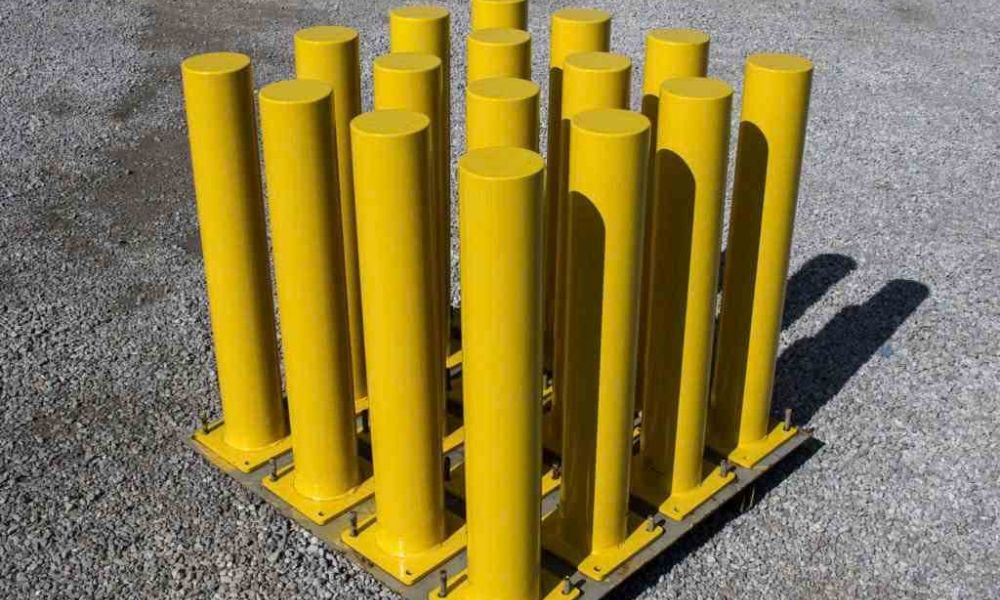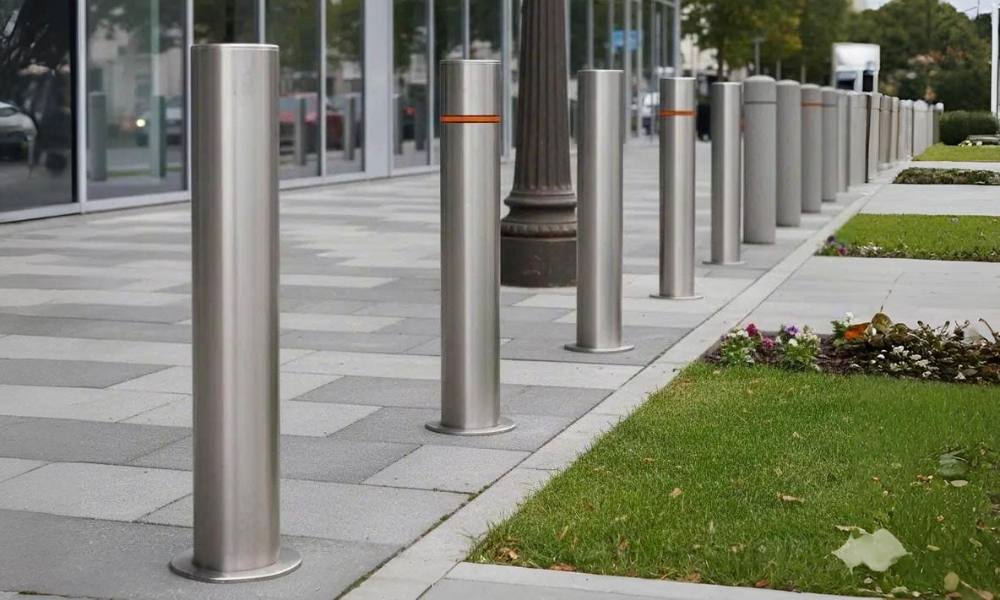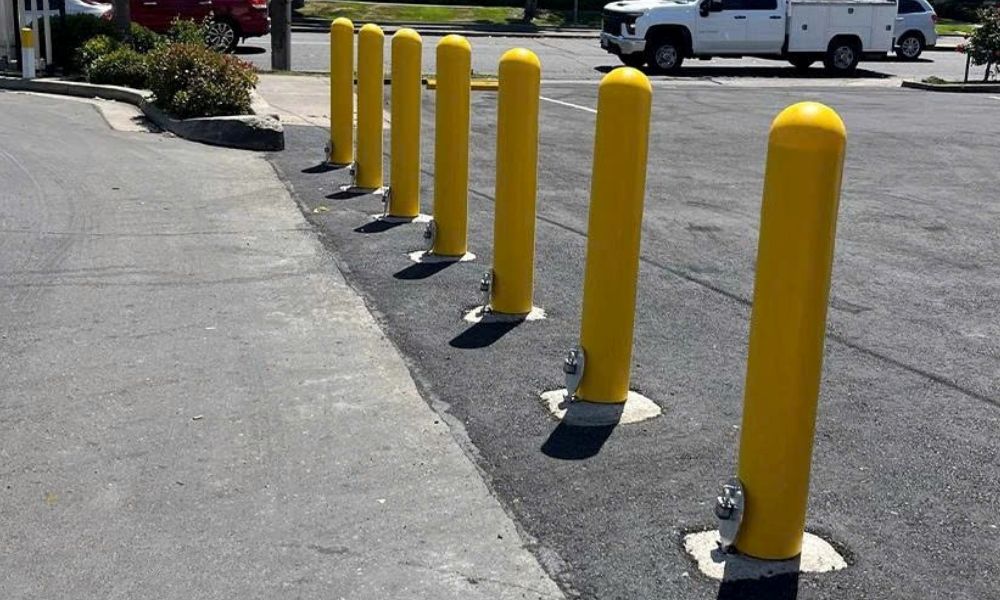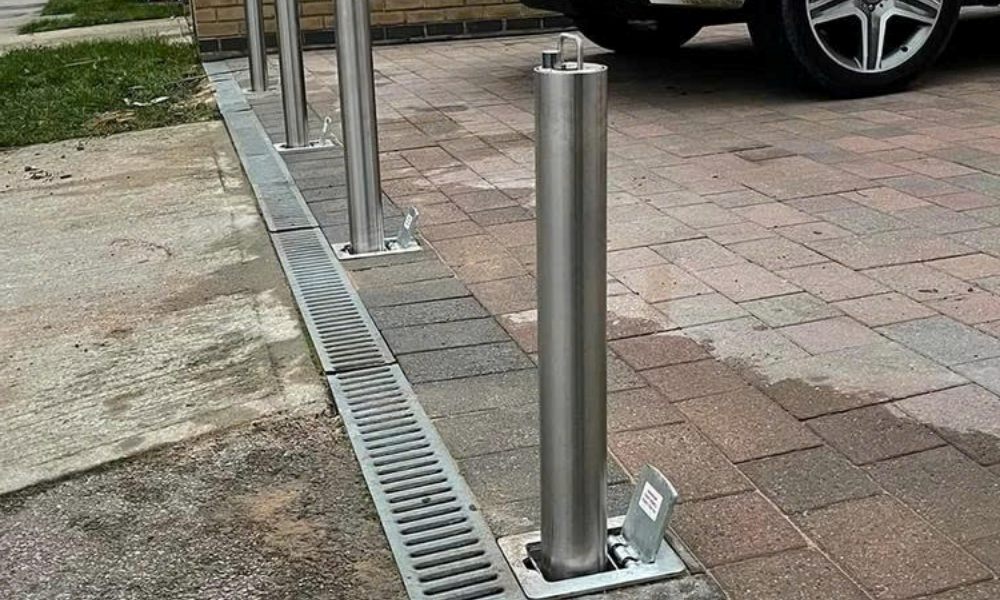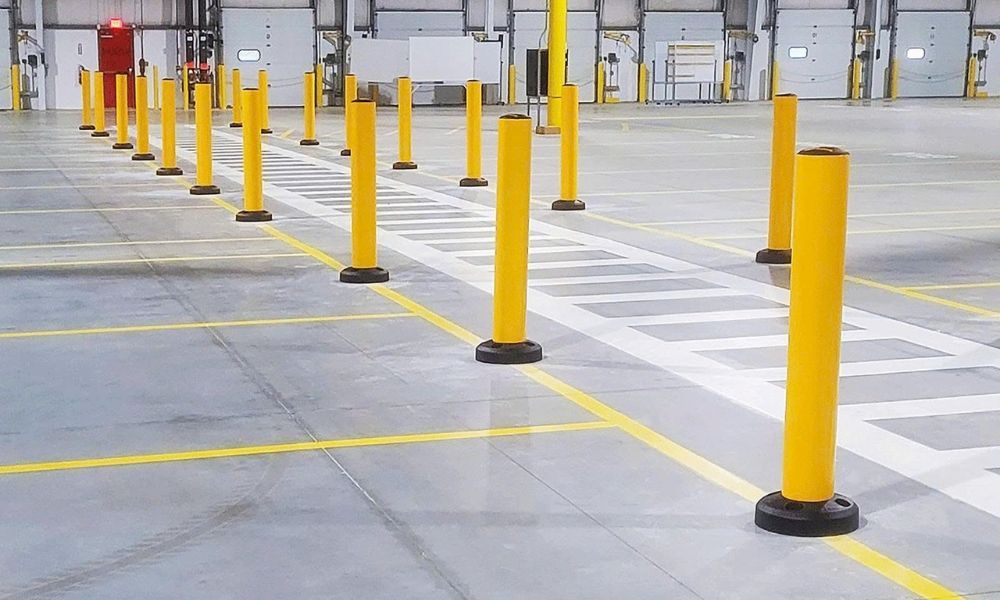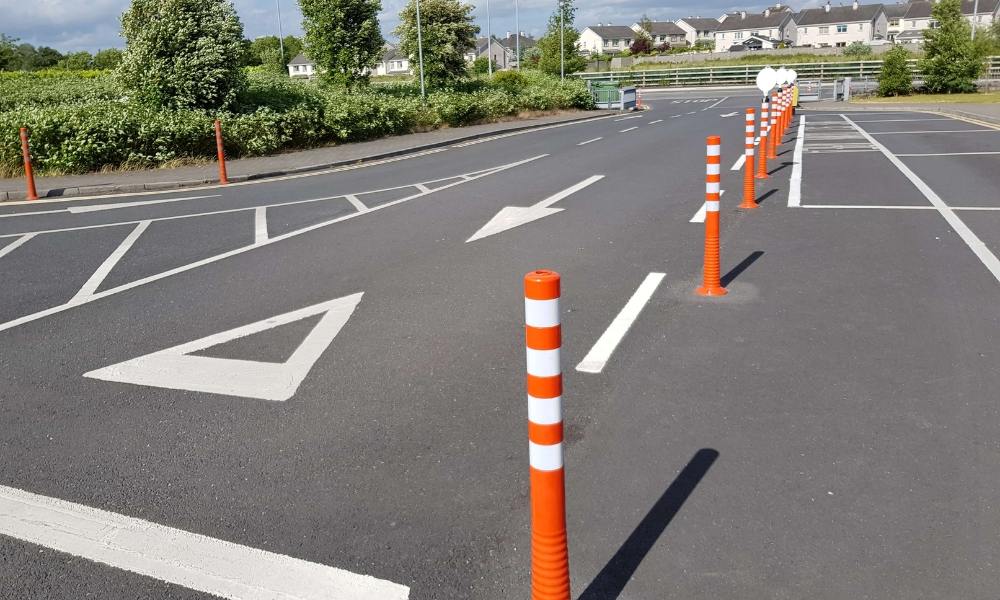Steel bollards are not only commonly used in public traffic systems but also play a vital role in ensuring safety across industrial and commercial environments. Understanding the different types of safety bollards is the key to making the right decision for your project space.
WHAT ARE STEEL BOLLARDS AND WHY ARE THEY NECESSARY?
Steel bollards are vertical cylindrical posts made of steel, installed in public, industrial, and commercial areas to control vehicle movement and protect people and property from potential collisions.
Most modern bollards are manufactured from high-strength steel, mild steel, galvanized steel, or stainless steel, often finished with powder coating for superior corrosion resistance and durability.
You can easily spot safety bollards everywhere on roads, in industrial zones, train stations, airports, or in front of shopping centers. They function as protective barriers, ensuring that all activities in those areas run safely and efficiently.
MAIN FUNCTIONS OF STEEL BOLLARDS
-
Protecting People and Property
Safety bollards act as a physical barrier, preventing vehicles either accidentally or intentionally from entering pedestrian areas, storefronts, or restricted zones. This helps protect both people and property from damage or injury.
-
Traffic Control
Bollards effectively guide and control traffic flow, ensuring that vehicles move in the correct lanes, separating pedestrian pathways, and maintaining order in parking lots, warehouses, and public spaces.
-
Enhancing Operational Safety and Efficiency
In industrial settings, bollards help define restricted areas, protect machinery, columns, walls, and forklift paths, and reduce the risk of accidents and lower facility maintenance costs.
TYPES OF STEEL BOLLARDS
-
Fixed Bollards (Permanent Bollards)
As the name suggests, Fixed Bollards are permanently installed into the ground. They are usually made of high-strength or stainless steel, providing exceptional protection against high-impact collisions. This type is ideal for high-security areas such as government buildings, military bases, or industrial steel buildings.
However, since they are fixed in place, they cannot be moved or adjusted, and the installation cost and time are higher. Therefore, they are less suitable for spaces that require frequent layout changes.
-
Removable Bollards
Removable Bollards are designed with a locking base, allowing them to be easily installed or removed when needed. They are ideal for temporary access areas such as parking lots, restricted zones, or event spaces.
However, they offer less impact resistance than fixed bollards and require regular maintenance due to frequent removal and reinstallation, which can lead to wear over time.
-
Retractable Bollards
Retractable Bollards are designed with most of their mechanism embedded underground, allowing the post to be raised or lowered as needed. When retracted, the post sits flush with the surface, eliminating tripping hazards and preventing vehicle damage. This makes them perfect for commercial buildings, driveways, and entry points.
However, their underground mechanism makes them more expensive to install and maintain, and their impact resistance is not as high as that of fixed bollards. Proper installation requires an experienced contractor to ensure smooth operation and system longevity.
-
Surface-Mounted Bollards (Bolt-Down Bollards)
Surface-Mounted Bollards are bolted directly onto the surface rather than embedded into the ground. They are best suited for temporary setups or areas where excavation is not possible, such as event zones or relocatable installations.
However, their impact resistance and stability are lower since they depend heavily on the surface condition.
-
Flexible Bollards
Unlike other types, Flexible Steel Bollards are made from rubber or polyurethane, allowing them to bend or absorb impact during collisions. This minimizes vehicle damage, making them ideal for high-traffic areas or sensitive environments.
However, they can deform or wear out after repeated impacts and must be replaced periodically to maintain safety and appearance.
CHOOSE A SUITABLE STEEL BOLLARD MANUFACTURER
Selecting the right bollard manufacturer is as important as choosing the right design. A reliable supplier ensures compliance, precision, and longevity. Here’s what you need to know:
- Material quality: Ensure proper steel grade and protective coatings.
- Fabrication standards: Verify compliance with international safety norms.
- Customization: The ability to produce bollards in varied sizes, designs, and finishes.
- Experience: A proven track record in large-scale commercial or export projects.
- Pricing: Transparent, competitive costs that balance quality with value.
In recent years, Vietnam has become a growing hub for steel and stainless steel bollard manufacturing. With strong metal fabrication expertise, competitive labor costs, and improved export infrastructure, many international contractors now source safety bollards from Vietnam for global projects.
FAQs
- What is the standard size of steel bollard?
Standard bollards are typically 114 mm in diameter and 900 mm tall above ground. Sizes may range from 100–165 mm Ø and 900–1200 mm height, with 3–6 mm wall thickness, depending on protection level and application.
- How far should bollards be apart?
Bollards should be spaced 1 to 1.5 meters apart, depending on the intended level of security. The goal is to allow pedestrian flow while preventing vehicles from entering restricted areas.
- What is the Australian standard for bollards?
The AS/NZS 3845.1:2015 standard defines performance requirements for safety barriers and bollards used in public infrastructure and traffic management. It ensures that products can withstand specific impact forces and meet safety benchmarks.
- Should you choose a bollard manufacturer from Vietnam?
Yes, Vietnam is an excellent option for sourcing bollards. Manufacturers in Vietnam offer:
- High-quality fabrication standards
- Competitive pricing
- International export experience
- Custom design and production flexibility
This combination makes Vietnamese suppliers a cost-effective choice for global buyers.
- How much do steel bollards cost to manufacture in Vietnam?
The fabrication cost depends on factors such as design, material type (mild steel or stainless steel), wall thickness, and surface finishing. On average, Vietnamese manufacturers provide high-quality steel bollards at significantly lower costs compared to Western or other Asian markets without compromising quality.
If you need a high-quality bollard manufacturer offering tailored metal solutions that meet international standards.
Contact Newinds:
Email: sales@newindscorp.com
Phone/Whatsapp/Zalo: Ann Yen +84 868 482 038
